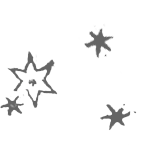Asia
Asia
Exhibit items related to Asia.
Exhibit Items
|
A Description of the Plan of Peking, the Capital of China Gaubil, Antoine (1748) The Forbidden City was home to the Chinese Emperor and the political center of Chinese government for hundreds of years. Despite occasional tensions, Jesuits from Schall in the 17th century to Gaubil in the 18th century were granted admission as advisors. |
 |
|
| 0 |
Secret Book of the Quiver Ise, Heizo Sadatake (ca. 1846) Manuscript copy by Hajime Terai from original written in 1765 by Ise; illustrations copied by Odani. |
|
| 1 |
Chinese lion, George and Cecilia McGhee Collection This Chinese lion is know as a Shi, or an imperial guardian lion. It was a symbol of protection and often placed in front of tombs, palaces, temples, and important homes |
|
| 1 |
Almagest, ed. Regiomontanus Ptolemy, Claudius (1496) Ptolemy (Claudius Ptolemaios) lived in Alexandria, Egypt, in the second century. Ptolemy’s technical work on astronomy, originally written in Greek, was titled Almagest (“The Greatest”) by its Arabic translators. |
 |
| 1 |
On the Christian Expedition to China Ricci, Matteo (1616) This book recounts the establishment of the Jesuit mission in China in the late 1500s led by Matteo Ricci. When Ricci predicted a solar eclipse in 1592 with greater accuracy than the astronomers of the Chinese court, Emperor Wan-li invited Ricci to Beijing. |
 |
| 2 |
Wonderful Machines of the Far West Schreck, Johann (1830) Schreck helped Galileo show the telescope to the Medici family and others in Rome. Once he arrived in China, he wrote this work on engineering in Chinese. |
 |
| 2 |
The Philosopher of China Confucius, (1687) Confucius lived in the early 5th century BCE, roughly contemporary with the Pythagoreans and Presocratic natural philosophers. Confucius taught: “Do not do to others what you do not want done to yourself,” an early version of the Golden Rule. |
|
| 2 |
Euclid's Elements of Geometry, 1594 Al-Tusi, Nasir ad-Din (1594) This Arabic text of Euclid came from the circle of the Persian astronomer al-Tusi (13th century). Al-Tusi worked in Baghdad and in the observatory of Maragha, in modern northwestern Iran. Printing Arabic with moveable type was a technological challenge. |
 |
| 3 |
On the Dream of Scipio Macrobius, (1521) This work by Macrobius (5th century) illustrates the wealth of ancient and early medieval literary sources relevant to cosmology. Macrobius here comments upon a classic story of Cicero which described a vision given to the Roman general Scipio. |
|
| 3 |
Historical Narration of the Origin and Progress of the Mission to China Schall, Adam (1665) This book is Schall’s account of the Jesuit mission in China after Ricci. Working closely with Chinese collaborators, Schall oversaw the publication of more than 30 scientific works in Chinese which drew upon Galileo, Copernicus, Tycho, Kepler and John Napier. |
 |
| 3 |
Observations of Comets from B.C. 611 to A.D. 1640 Williams, John (1871) A Chinese celestial atlas and chronological tables, reproduced in Williams’ own hand, appear in this record of 372 comet sightings from 611 B.C.E. to 1640 C.E. |
|
| 4 |
General History of China, vol. 2 du Halde, J.B. (1741) The secret of silk farming spread from China to Korea and India about the beginning of the Common Era. Its international trade led to the establishment of the Silk Road, which extended over 4,000 miles and connected the major ancient and medieval civilizations from China to Asia Minor. |
 |
| 4 |
Monuments of China Kircher, Athanasius (1667) Back in Rome, Kircher collected all the information he could gather from Jesuits in China, publishing this massive encyclopedia on China, Tibet, India, Korea and Japan. It contains two notable early maps, numerous portraits, and an introduction to Sanskrit and Chinese characters. |
 |
| 5 |
The Yellow Emperor's Canon of Moxibustion Dou, Guifang (1659) This work is a commentary on the Ling-shu, a classic treatise on acupuncture and moxibustion. It describes treatments for a variety of conditions, with 45 depictions of acupuncture points for both adults and children. |
|
| 5 |
China, Illustrated with Many Monuments Kircher, Athanasius (1670) In one of Kircher’s images is of Matteo Ricci is pictured on the left, along with Xu Guangki (??? 1562-1633) on the right. |
|
| 6 |
Cosmography, 1574 Munster, Sebastian (1574) Munster’s Cosmography was one of the most popular books of the 16th century. In addition to the map of the world, it includes separate maps for America, Africa, Asia and Europe. First published in 1540, at least 24 editions were published in the following century. |
|
| 6 |
Yin-Yang medallion (1960) Yin and yang, a recurring motif in traditional Chinese thought, express the idea of the interconnectedness of opposites. Phenomena which appear as dualities to us, such as darkness and light, or high and low tides, will turn out to be interdependent and profoundly related. |
|
| 6 |
History of that Great and Renowned Monarchy of China Semedo, Alvaro (1655) Semedo, a Jesuit who lived in China for more than 20 years, was the first European scholar to see and translate the Nestorian monument in Xian. |
|
| 7 |
Memoirs... made in a late Journey through the Empire of China Comte, Louis le (1698) Le Comte, a French Jesuit sent in 1687 by Louis XIV to work in the Kangxi court, depicted the Beijing observatory at the end of Schall’s life. |
|
| 7 |
The Dutch Embassy to the Grand Tartar Chamum Sungteium, Modern Emperor of China Nieuhof, Johann (1668) This travel narrative and encyclopedia presented the most up-to-date information about China based on Jesuit sources and the knowledge of commercial traders. |
|
| 8 |
Beijing: History and Description Favier, Pierre-Marie-Alphonse (1897) Photographs of the Beijing observatory show what remained of the astronomical instruments in 1897. |
|
| 9 |
Commentary on Al-Qabisi Al-Qabisi, (1512) This medieval introduction to astrology was frequently translated from Arabic into Latin. Al-Qabisi lived in the 10th century in Syria. |
|
| 9 |
Introduction to Astronomy, 1706 Baba, Nobutake (1706) This work, written by a Kyoto physician, represents Asian astronomy in the generation following Adam Schall. Baba countered superstitious interpretations of solar eclipses, and used magnetic theory rather than yin and yang to explain the tides. Baba adopted the Tychonic model of cosmology. |
 |
| 9 |
The Kingdom of China, before now called Cathay and Mangin Cantelli, Giacomo (1682) This map, based on Cantelli’s own reports as well as the surveys of Martini, influenced the larger Coronelli map also on display. Cantelli depicts relief and features like the Great Wall pictorially. Peking is clearly indicated. Korea is a peninsula, per Martini. |
 |
| 10 |
On the Sphere of the Universe bar Hiyya, Abraham (1546) Abraham bar Hiyya, also known as Savasorda, was a 12th century Jewish mathematician and astronomer in Barcelona. In this beautiful introduction to astronomy, bar Hiyya’s text appears in Hebrew alongside a Latin translation. |
 |
| 10 |
The Western and Eastern Parts of China divided into their Provinces Coronelli, Vincenzo (1696) European techniques of map-making, coupled with Chinese skill and knowledge, led to this two-sheet map by Coronelli. It clearly indicates the Great Wall, Beijing (Xuntien), Korea, and Taiwan. The westernmost part of Japan is also visible. |
 |
| 11 |
General History of China, vol. 1 du Halde, J.B. (1741) Du Halde lived in China for nearly 30 years. This work recounts the story of Candida Xu, who collaborated with the Jesuit astronomers as had her grandfather, Xu Guangki. For a foldout map of China, du Halde drew upon the Kangxi atlases of 1717 and 1721. |
 |
| 12 |
General History of China, vol. 3 du Halde, J.B. (1741) Du Halde lived in China for nearly 30 years. This work recounts the story of Candida Xu, who collaborated with the Jesuit astronomers as had her grandfather, Xu Guangki. For a foldout map of China, du Halde drew upon the Kangxi atlases of 1717 and 1721. |
 |
| 13 |
General History of China, vol. 4 du Halde, J.B. (1741) Du Halde lived in China for nearly 30 years. This work recounts the story of Candida Xu, who collaborated with the Jesuit astronomers as had her grandfather, Xu Guangki. For a foldout map of China, du Halde drew upon the Kangxi atlases of 1717 and 1721. |
 |
| 18 |
Book of the Arrow Nobutoyo, (ca. 1846) Galileo’s mechanics demonstrated that projectiles follow a parabolic path. This is true whether the projectile is a cannonball, an arrow or a football. This set of four Japanese Samurai manuscripts, drawn on rice paper in the mid 1800’s, was copied by hand from mid-16th-century sources. |
|
| 19 |
Book of Leggings Nobutoyo, (ca. 1846) Galileo’s mechanics demonstrated that projectiles follow a parabolic path. This is true whether the projectile is a cannonball, an arrow or a football. This set of four Japanese Samurai manuscripts, drawn on rice paper in the mid 1800’s, was copied by hand from mid-16th-century sources. |
|
| 20 |
Secret Book of Hunger for the Target Ise, Heizo Sadatake (ca. 1846) Galileo’s mechanics demonstrated that projectiles follow a parabolic path. This is true whether the projectile is a cannonball, an arrow or a football. This set of four Japanese Samurai manuscripts, drawn on rice paper in the mid 1800’s, was copied by hand from mid-16th-century sources. |





